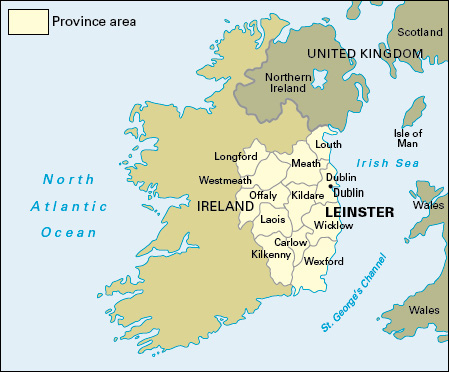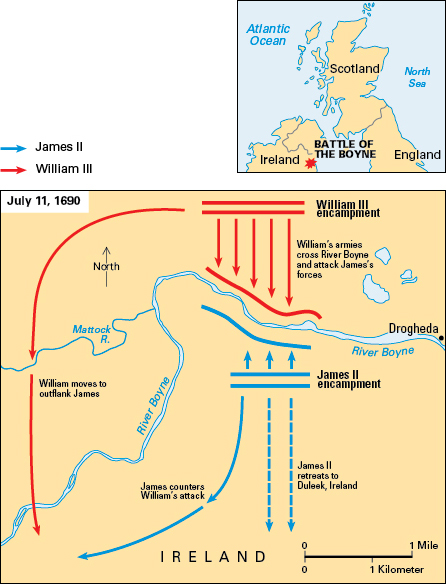Leinster is one of the four provinces of Ireland. It occupies much of the eastern and central part of the Republic of Ireland. Leinster covers an area of 7,580 square miles (19,633 square kilometers). It consists of 12 counties: Carlow, Dublin, Kildare, Kilkenny, Laois, Longford, Louth, Meath, Offaly, Westmeath, Wexford, and Wicklow. The province also includes the city of Dublin, the capital of the Republic of Ireland. It is the most economically developed of the provinces. Most of the people of Leinster are Roman Catholics.

Economy.
Much of Leinster’s land is used for farming. Chief crops are barley, oats, potatoes, sugar beets, turnips, and wheat. Truck gardens in Dublin supply the city with vegetables and fruit. Beef and dairy cattle, horses, and sheep are also important.
Dublin, Ireland’s largest city, is by far the province’s leading commercial and industrial center. Service industries, including education, health care, business services, and trade, employ most of the province’s people. Leinster’s chief manufactured products include beer, chemicals, clothing, electronic and electrical goods, food products, machinery, paper and printed materials, and textiles. Stone, sand, and gravel quarries supply the construction industry in Dublin. One of the world’s largest lead and zinc mines is in County Meath.
Land.
Much of Leinster is in the central lowland of Ireland. The main upland area is in the southeast, where the Leinster Chain extends from Dublin through the Wicklow Mountains to the Blackstairs Mountains. For many years, people cut peat from bogs in the Midlands region to use as a cooking and heating fuel.
History.
The Newgrange tomb and other burial sites in the Boyne valley, dating from about 3000 B.C., provide evidence of early human settlement. In the 300’s B.C., Leinster became divided into two kingdoms, South Leinster and North Leinster, which is also called Meath. From the A.D. 800’s, the Vikings developed Dublin as a major trading center.

The Anglo-Normans arrived in 1169. English control was greater in Leinster than in other provinces. In the 1500’s, British settlers colonized part of the Midlands. King William III defeated King James II at the Battle of the Boyne in 1690. Because of its eastern position, and Dublin’s role as the center of power, many important events in Irish history have occurred in Leinster. Among the most famous was the Easter Rising of 1916.
